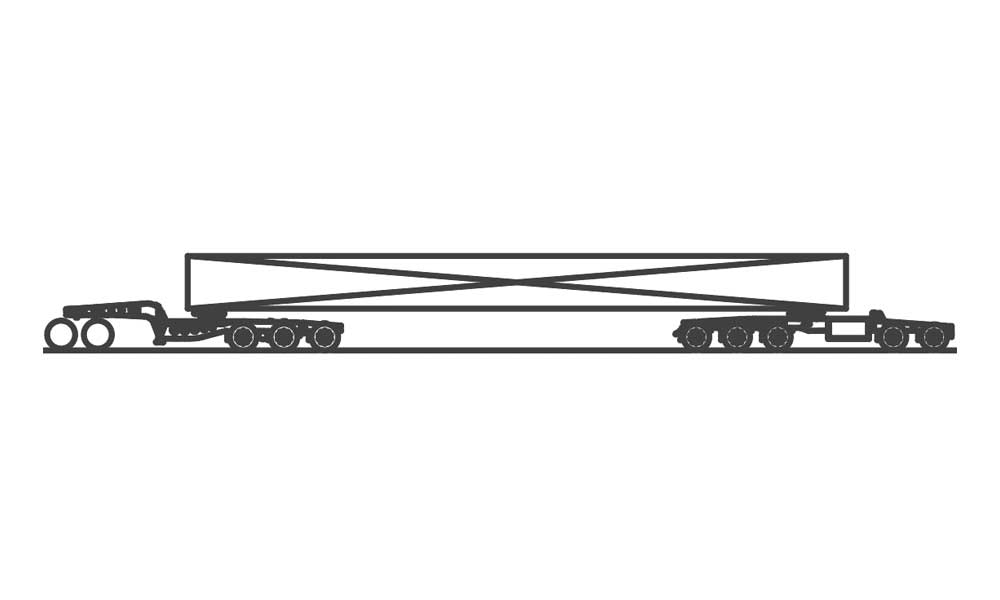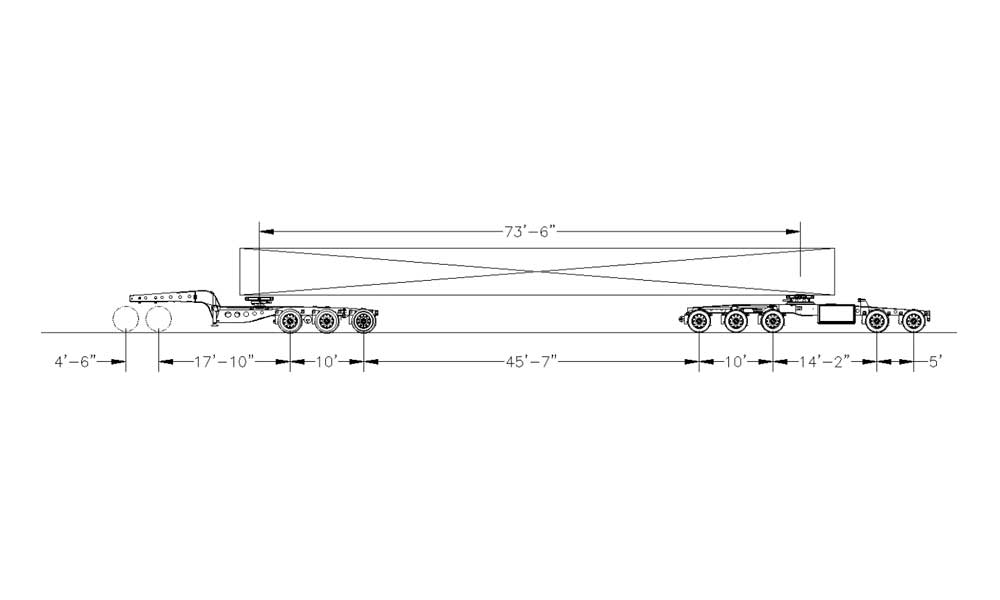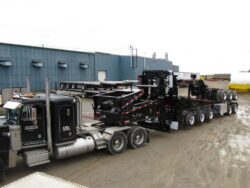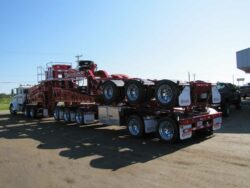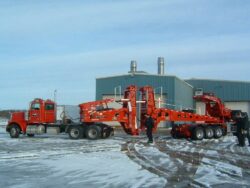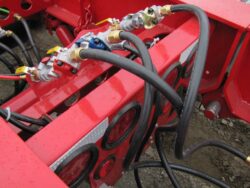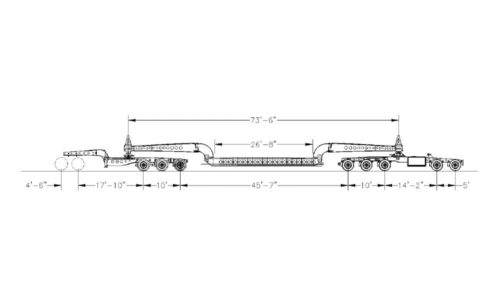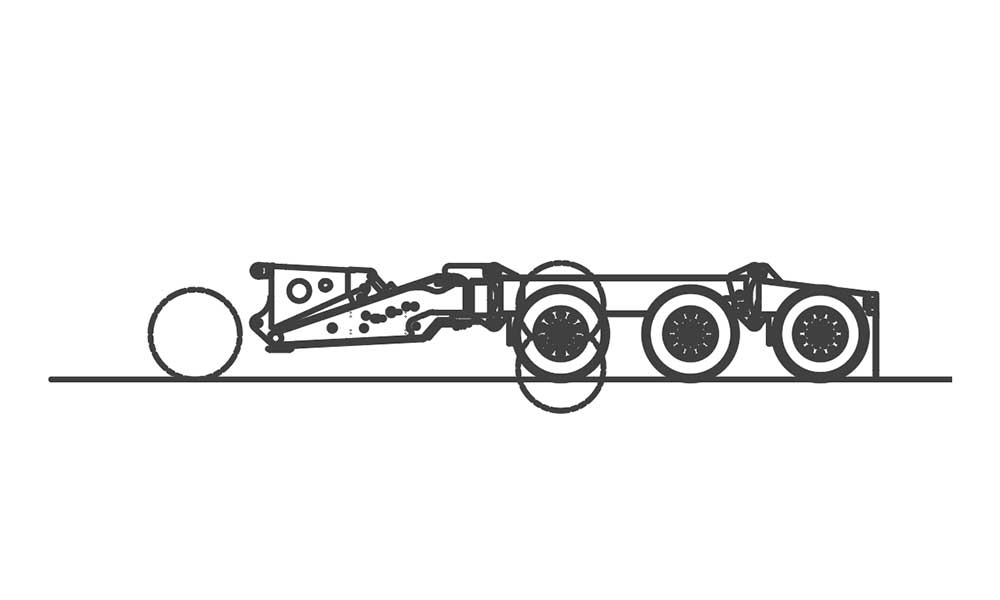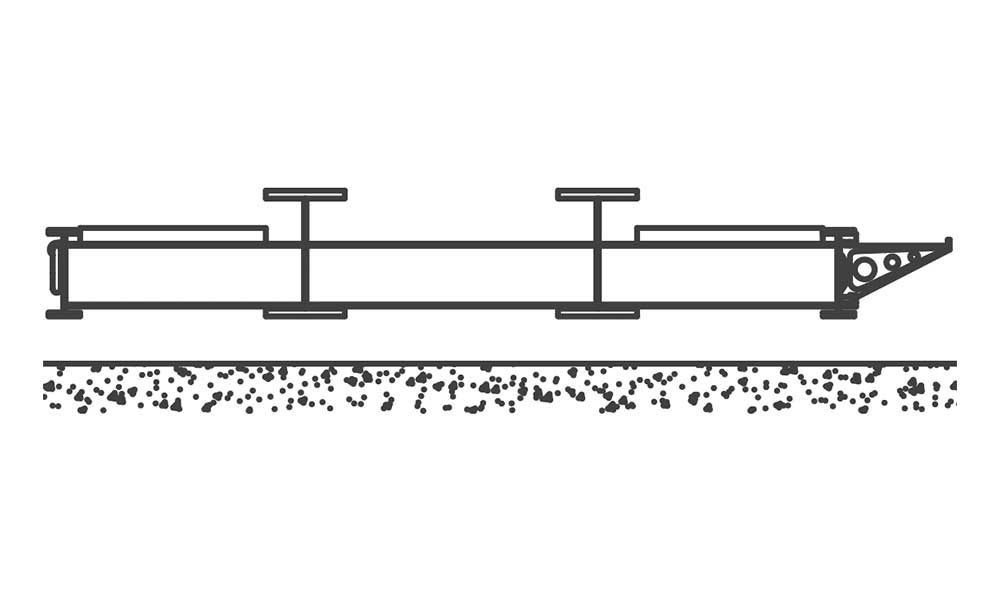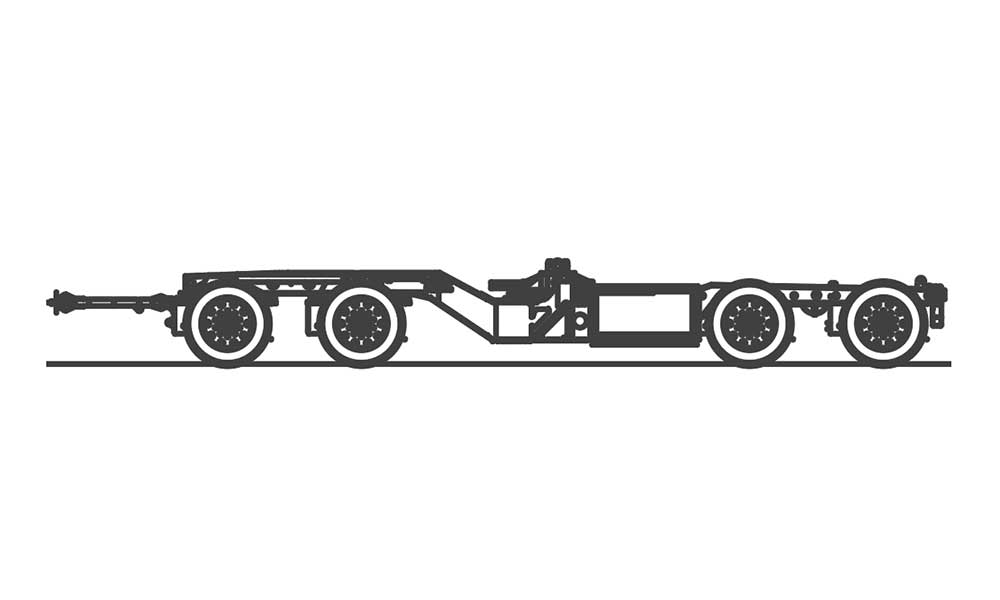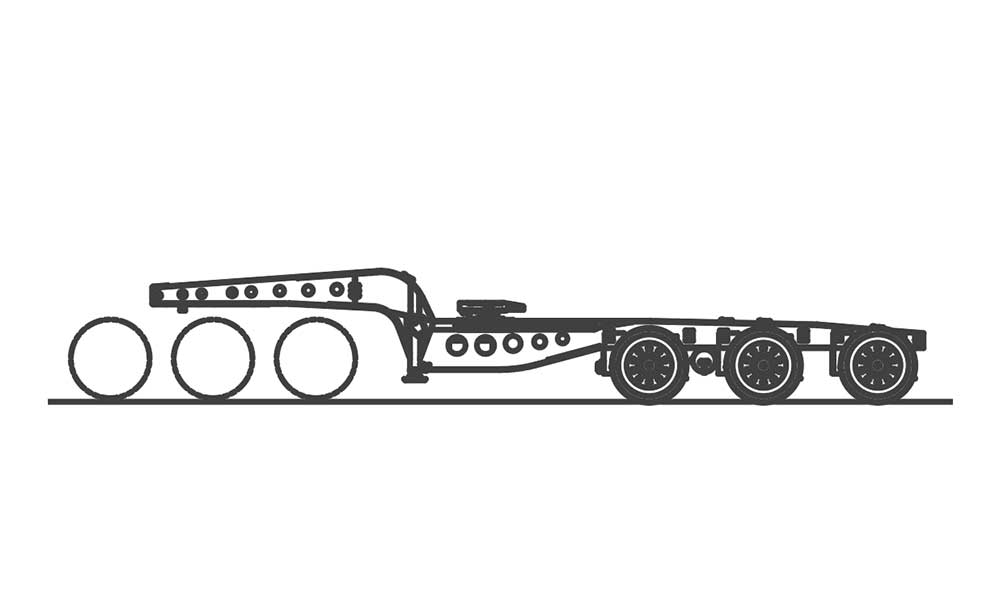For self-supporting loads, the jeep and dolly configuration is typically equipped with loading bunks and power tower. The loading bunks are used to tie one end of the load to the jeep and the other to the dolly. Air and electrical lines are then hung on the load completing the connection. The power tower in the dolly is used to raise the load over obstacles or lower it to a minimum to clear overhead obstacles. The 3+2 axle steerable dolly is not typically used as a beam hauler because the main turntable loading height is very tall.
When the self-supporting load is detached from the two units, the dolly’s tow bar is then attached to the jeep for the empty return trip.
Double Gooseneck Add-on
This jeep and dolly configuration is usually equipped with a double gooseneck or schnabel add-on. These attachments are not affected by the 3+2 dolly’s high loading height as they drop down to create a low loading height. The necks are usually equipped with a lifting mechanism to raise the load above any obstacles that may be encountered on the trip so there is no need for a power tower in the dolly or jeep.
This configuration can be shortened for the return trip by loading the deck sections one on top of the other and loading the jeep on the deck. The dolly is then hung under the neck to only ride on the back two axles.
This configuration is not strictly limited to a tandem jeep and 2+2 dolly. A different jeep may be used to increase the capacity or to lower the loading height to the same level as the steering dolly.

